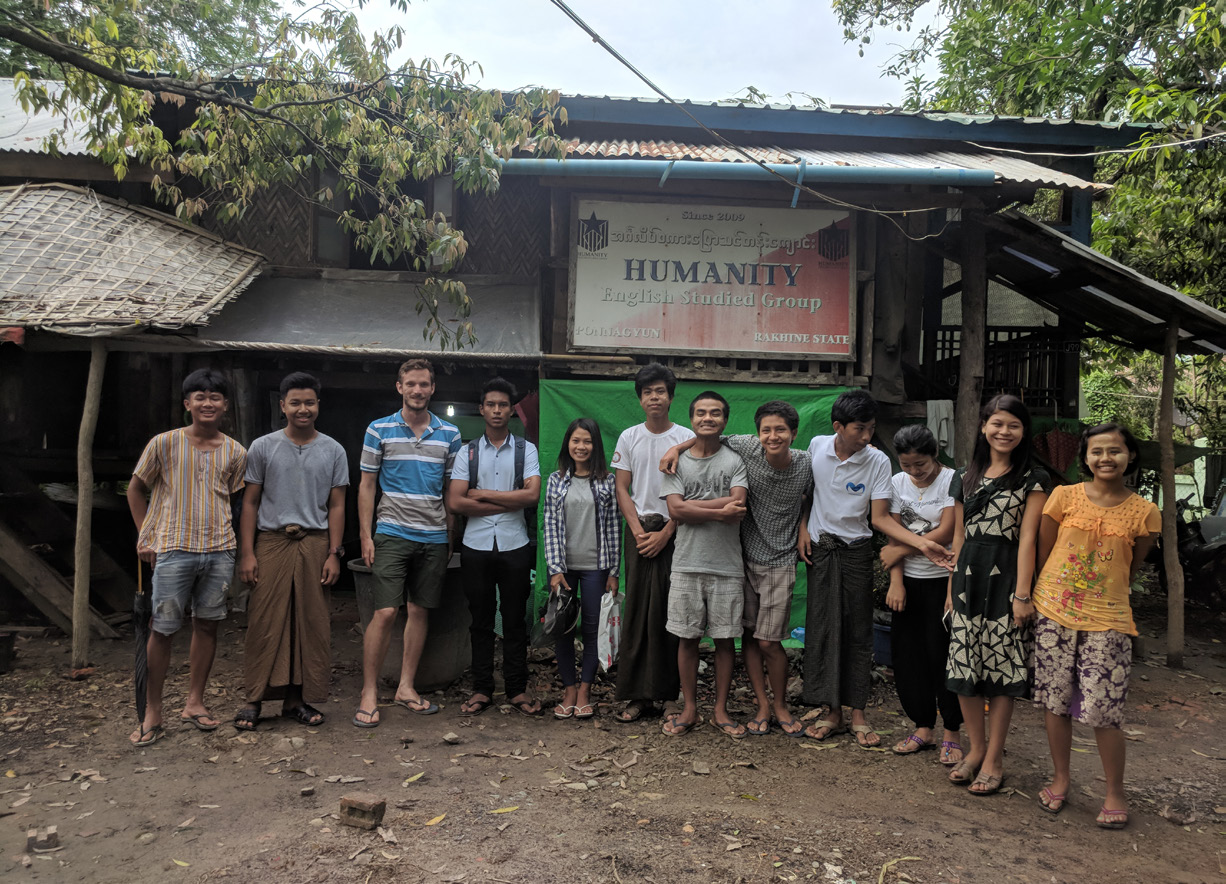In the summer of 2018, I traveled to Sittwe, Rakhine State, Myanmar as an AC4 Peace Fellow to support the implementation of a Human Rights education curriculum I wrote in cooperation with the Peace and Development Initiative (PDI), a local civil society organization in Rakhine State. The general contours of the 2017 Rohingya crisis in Rakhine — which the United Nations referred to as a “textbook genocide” — are well documented; hundreds of thousands displaced, untold numbers killed, Rohingya villagers shot in the back as they fled to the border with Bangladesh. Sittwe bares the open scars of the conflict. The ashes of Muslim homes settle underneath incongruous patches of tall grass in the city. The only remaining mosque — saved only because of its relative antiquity — is gated and guarded day and night by soldiers. In town, standard hallmarks of Muslim garb are nowhere to be found, save for behind the barbed-wired walls of a heavily patrolled neighborhood where the last of Sittwe’s Rohingya population is confined. In this context, the Peace and Development Initiative is the only local organization attempting to provide social cohesion programming and comprehensive Human Rights Education.
I arrived in Sittwe with several copies of the curriculum I drafted, neatly bound in Columbia University binders, and a variety of teacher training materials. I was based at the Akyab Institute of Social Studies (AISS), PDI’s flagship institution where the curriculum would first be piloted. The school serves a cohort of 30 mostly ethnic Rakhine pre-college adults. The organization intends to open a second school in a nearby internally-displaced persons camp, which will implement the same curriculum with Rohingya youth. In the still-conflicted northern region of Rakhine State, PDI offers abbreviated programming coupled with social cohesion courses for Rakhine and Rohingya youth. Pending successful piloting of the curriculum I produced at AISS this coming year, it will be adapted and implemented at all of PDI’s programming locations.
While there, I conducted a three-stage curriculum implementation process. First, I led a 5-day basic training of trainers (ToT) to prepare the junior teacher core group at the Peace and Development initiative to implement the curriculum. Following the training, I worked with a select group of aspiring Human Rights educators selected from the ToT to conduct an in-depth
review of the curriculum materials. Participants were invited to review each individual module and rate it for its relevance and effectiveness, provide suggestions, and contribute feedback and stories that may improve the relevance of the curriculum. Finally, the same cohort of future Human Rights educators adopted a module of their choosing, adapted it, and piloted it at monastic schools in central Rakhine State. Using the information gained in this contextualization procedure, I drafted a second version of the curriculum which incorporated the feedback and stories provided by the teachers. The result is a 20-module, semester-long Human Rights Education curriculum which includes five units and various project-based assessments.
For more information about the curriculum or contextualization process, feel free to contact me by email (bjs2222@tc.columbia.edu).
